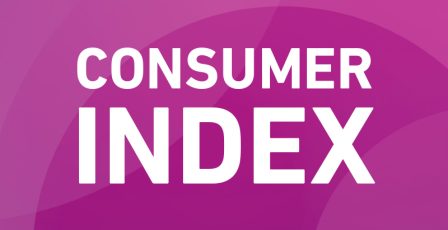Update on key utilities trends: Unpicking arrears in energy
Unlike any other sector, utilities is experiencing unique and unprecedented changes in consumer behaviour.
This blog unpicks the trends and should help those within the sector consider appropriate changes to strategy and policy to stay ahead and to those outside of the sector, it will help ensure you have awareness and an understanding of some of the implications for you.
The following 4 insights highlight the scale of the challenge in the utilities sector:
1. Consumer energy debt and arrears is £4.4bn[1], almost doubling (71% increase) in 2 years (Ofgem[2]).
How does this rapid increase in energy debt compare to other utility bills and consumers’ wider financial commitments?
Before we analyse increases in energy debt, it’s important to contextualise this. Experian’s insights show that the vast majority of customers continue to pay their energy bills in full and on time. However, whether we use our data or Ofgem’s there has been a huge increase in energy debt over the last few years. Although it’s challenging to compare figures across sectors, energy appears to be a clear outlier. Looking at the percentage increase in 90+ days debt using Experian insights (to align to Ofgem reporting) shows that mortgages have experienced the next highest increase over the same period of 34%. Water has also increased by 12%. Looking further afield to consumers’ 90+ days arrears on unsecured lending repayments provides a mixed picture with the highest increase in car / auto loans (23% increase) and cards (20% increase), though unsecured personal loans fell by 28%. It’s important to note that Ofgem’s energy debt excludes debt which is being repaid via direct debit to cover a shortfall in prior years payments. (According to our data 90+ days energy debt has increased by well over 150% in the last 2 years).
What may be most surprising is that the value of the increase in 90+ days debt outstanding in the energy sector across the last 2 years is second only to mortgages – which is staggering when you consider the values involved across cards, loans, car loans and retail. Given the scale of the increase in energy debt it’s crucial we try to understand what’s driving it. Ofgem’s portal shows that the increase in energy debt has been driven by an increase in the volume of accounts without any debt repayment plan, and the amount they owe. Though this is helpful, it doesn’t explain why. The pressure on consumers’ finances created by the cost-of-living challenge, for example, affected all their commitments. Why then are we seeing such large debt increases in the energy sector? Factors to consider to help understand this include:
Price
Direct Debit failures
Policy and regulation
Estimated billing
- Price: Energy price rises will have driven some of the increase in debt, but this doesn’t explain the level of the rise. Energy debt also continues to rise despite energy prices falling and several affordability trackers (Ofcom and CCW, for example) all show an ease in consumers’ financial pressures. It’s also worth noting that mortgages have also experienced significant increases as historic low base rates of <1% have risen to over 5 % in 2023/24. This has increased mortgage payments by c£130+ p/m (over the last 2 years). However, in the last year, the 90+ days arrears balance has fallen.
- Direct Debit failures: there’s been some interesting analysis by BFY on direct debit failures[3] and the latest ONS data[4] continues to show Energy direct debit failure rates rising more steeply than other sectors (52% increase in direct debit failure rates for energy payments in the last 2 years versus an average of 16% rise in other payments). Are there challenges with reassessments?
- Policy and regulation: the introduction of additional consumer protections for the use of prepayment meters is the main regulatory change which occurred in 2023. Ofgem’s portal shows a decrease of c. 11pp in the proportion of customers repaying debt via a prepayment meter in the last year[5].
- Estimated billing: Historically, debts in the energy sector were often attributed to the misestimation of bills. Given the smart meter rollout, this should be reducing. (Government statistics[6] indicate that 33 million smart meters are operating in smart mode, that’s 61% domestic meters versus 25 million at the start of 2023).
What can utilities providers do?
It’s likely that several of the above are contributing to the reason why energy is an outlier and debts are rising. However, looking at best practice across sectors, we can see fundamental differences in approach to collections and support for customers in difficult circumstances, which may be leaving utilities behind. Sometimes, the basics of using data to ensure appropriate actions are taken, are not adopted, and debts that could be written off remain on book for long periods. Equally, payment plans don’t appear to be driven by a best practice, data-driven approach on consumers’ circumstances to inform the process – hence they’re much less likely to succeed. We have worked with several energy suppliers over the last few years to audit data processes and advise on best practice. It’s surprising to see when we do this how many suppliers are still, despite data advances available, trying to collect debt from consumers who died over 2 years ago, or where they have obtained an IVA/bankruptcy, but the supplier didn’t know.

Another key differentiator between sectors is the upfront assessment of customers before providing services. Across other sectors and telecommunications, most perform an upfront identity verification step in tandem with a credit and affordability assessment to check that the individual is likely to pay and that any service is affordable. Within energy and water, there is no ability to decline, though energy can perform an initial assessment to help determine whether a security deposit or pre-payment meter may be appropriate. As switching is on the increase and competition increases, this is becoming an area of focus. What is clear is that the quality of customers switching energy is varied and correlates highly to price/competitiveness. Secondly, those suppliers who are using identification and credit risk methods to determine initial terms are typically acquiring a significantly better risk profile of new customers.
Suppliers must initiate best practice, data-driven approaches to data collection and initial assessment of new customers.
2. Customers who get into difficulty when repaying their utilities bills are increasingly less likely to recover.
An analysis of the recovery rates (proportion of customers who enter collections and return to paying up to date) for the utilities sector shows a deterioration generally over the last 5 years. Once customers get into difficulty, they are increasingly less likely to get out of it. In 2021 c. 6% of customers who entered utilities collections ultimately defaulted, that figure now lies at c. 12%. Telecommunications flow to default rates are traditionally much higher. However, recently these have improved. There is considerable variation in default trends over time across other sectors.
In the face of deteriorating collections outcomes, what can utilities providers do?
A lot has been done over the last few years to try to address the challenge. Financial support programs for consumers have significantly improved, with several providers now offering debt matching schemes, and funding for financial support packages has also increased. Despite this approach, recovery rates continue to deteriorate in utilities.
Having worked with several suppliers I’ve seen a key starting point to drive focused change begins with understanding your performance relative to your sector across the collections cycle. This is then used to understand strengths and weaknesses and identify areas for improvement. Do you understand how well customers in early arrears recover relative to others in the energy, water or telecommunications sectors? Do you understand the effectiveness of your payment plans relative to your sector? There is a huge variation in the effectiveness of payment plans in utilities, with some suppliers achieving 90% ‘success’ (i.e. outstanding debt repaid and all accounts up to date over a 12-month period) – are you clear on how you compare to those in your sector?
What about later stage collections, do you have clarity on what proportion of your customers who aren’t making payments to you, are able to meet all their other financial obligations? The information that emerges from this type of work provides a plan with clear benefits.
3. Consumers behave differently when paying different bills. Most customers who are behind on their utilities bills are up to date on their other commitments.
If we focus on consumers who are in arrears on their energy bills an interesting picture emerges; the majority are also in arrears, or default, on their water bill; 56%. Looking further afield, as we’d expect, most of these consumers also have multiple financial commitments.
69%
have a telecommunications contract
34%
operate a credit card
8%
have car finance and so on
We might expect that we also see signs of difficulty across these other commitments. However, although this does happen, it affects the minority. Around 72% of these other commitments are all up to date. For example, 7% of consumers in energy arrears have a BNPL account. However, 92% of these are up to date on this account. As interest is payable on some of these other debts, then consumers may decide to pay these first, though Citizens Advice does place utilities bills as a priority debt. Is this situation understood fully? What steps can be taken across industries to equitably address the challenge, support those in need and prevent further deterioration?
4. Utilities know the least about their own customers in comparison to any other sector.
We receive over 750 million consumer records every month from over hundreds of organisations (including banks, telecommunications, energy, water, retailers who provide credit, credit card companies, loan organisations and so on). We check the quality of the data received. Each month we look at records with missing dates of births, surnames and forenames, for example. Without fail, utilities companies comprise the largest contributor of poor-quality data. Our ‘top 10’ organisations for the highest volume of missing dates of birth last month comprised entirely of utilities organisations. Utilities suppliers don’t know how old c. 10 million of their customers are! That’s 1 in 5 UK adults.
If your organisation’s data doesn’t include customer date of birth, how can you ensure, without incurring extremely high cost of home visits, that your collection processes for someone who is elderly or more vulnerable, are appropriate? If you don’t know customers’ surnames, you’re closing the door on linking in affordability data through CATO (Current Account Turnover data) to help underpin your understanding of a customer’s financial circumstance for a debt repayment plan. It’s really no wonder that the utilities sector is struggling with more debt repayment plans failing than succeeding.
Clearly, one of the key differences between utilities and any financial services provider is the requirement to confirm an individual’s identity. However, given the benefits that come with understanding who your customers are and their circumstances in a frictionless way, surely it’s time to challenge this difference?
What are the implications of rising energy debts for credit risk teams in financial services?
Despite the complex reasons, the sustained sharp increases in energy debt are a serious concern for consumers, those in the energy sector and wider financial services organisations to limit further detrimental impact. Consumer Duty means that you must look to achieve good customer outcomes. To achieve this, a key priority must be to ensure that you understand the customer’s full financial picture when considering further lending. Also bear in mind that not all utilities share data with credit bureaux, and the data quality can be poor. Therefore, it’s important to have mechanisms in place to understand potential utilities debt and mechanisms for repayment. Open Banking may help understand outgoings, though this will not provide an indication of debt.
How can we help?
If you’d like to know more about any of the topics covered, get in touch with our consulting team.
[1] Data portal, Ofgem
[2] Debt and arrears indicators, Ofgem
[3] Rethinking Energy Debt – Why are debt levels not falling?, BFY Group
[4] Dataset: Monthly Direct Debit failure rate and average transaction amount, ONS
[5] All available charts, Ofgem
[6] Q1 2025 Smart Meters Statistics Report, UK Government









